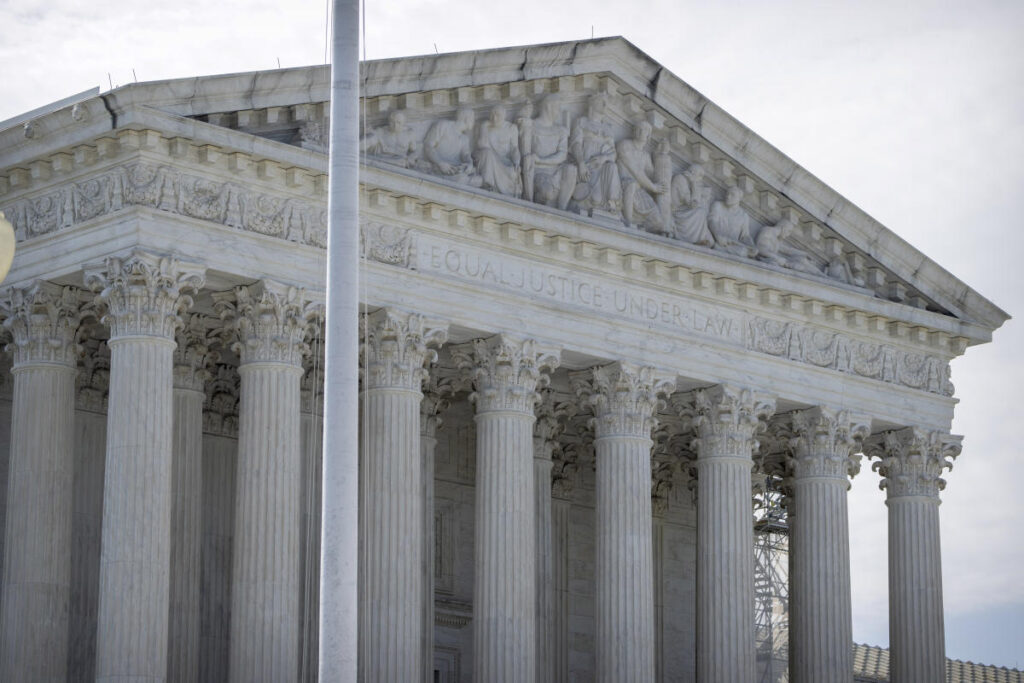The Supreme Court recently upheld a decision restricting emergency abortions in Texas, reinforcing one of the strictest abortion laws in the United States. This ruling is significant as it focuses on a lower court order asserting that hospitals cannot be mandated to perform pregnancy terminations if doing so would infringe Texas law. Notably, the justices did not provide a rationale for this decision, nor were there any noted dissenting opinions among them. This ruling arrives in a politically charged context, just weeks ahead of a presidential election where abortion has become a central issue, especially following the Court’s controversial 2022 ruling that overturned Roe v. Wade, effectively ending the nationwide right to abortion.
The Biden administration had urged the Supreme Court to invalidate the lower court’s order, contending that federal laws necessitate hospitals to provide abortions in emergencies when a pregnant patient’s life or health is significantly jeopardized, regardless of state laws prohibiting the procedure. This concern reflects a growing number of reports regarding pregnant women facing emergencies being denied appropriate medical care in Texas hospitals, as healthcare providers grapple with navigating the complexities of state abortion bans. The administration’s challenge was reinforced by a recent Supreme Court decision regarding a similar case from Idaho, where emergency abortions were allowed to recommence amid an ongoing lawsuit.
In contrast, Texas officials argued for the order’s retention, asserting that the situation in their state is distinct from that of Idaho due to Texas’s existing legal exemptions for situations threatening the mother’s health. Texas emphasized that its state supreme court had clarified that medical professionals do not need to wait for a pregnant woman’s life to be in imminent danger before providing a legal abortion. However, the vagueness surrounding the Texas law has raised alarm among healthcare providers, who feel uncertain about the risks involved in performing abortions to protect patients from serious medical complications.
Medical professionals have historically considered pregnancy terminations as critical interventions in managing severe complications associated with pregnancy, such as preventing infections and organ failure. Yet, under the severe restrictions of Texas’s abortion laws, doctors and hospitals are in a precarious position regarding the legal ramifications of providing necessary care. The ambiguity in the legal definitions of what constitutes a significant health risk potentially discourages healthcare providers from performing life-saving procedures, risking both legal repercussions and the health of pregnant patients.
The legal conflict in Texas emerged after the landmark Supreme Court decision overturning Roe v. Wade, which triggered a wave of tightening abortion laws in numerous Republican-controlled states. Following this ruling, the Biden administration issued guidance mandating that healthcare facilities must carry out abortions in emergencies, based on a healthcare law that obligates hospitals to treat patients in distress. Texas responded by filing a lawsuit against this guidance, arguing that it improperly overstepped federal authority and infringed on the state’s right to impose its own laws concerning abortion. Ultimately, the 5th U.S. Circuit Court of Appeals sided with Texas, validating the state’s position in this contentious dispute.
In summary, the Supreme Court’s decision to maintain Texas’s abortion restrictions marks a critical moment in the ongoing legal and political battles surrounding abortion rights in the United States. The implications of this ruling are profound, especially in light of the rapidly evolving landscape of abortion legislation and the perceived conflict between state and federal authority in healthcare. As the nation approaches pivotal elections where reproductive rights are at stake, the future of abortion access, particularly in states like Texas grappling with stringent bans, remains uncertain and highly contested. The tension between legal interpretations, healthcare needs, and patient rights will continue to shape this complex issue in the months and years to come.

